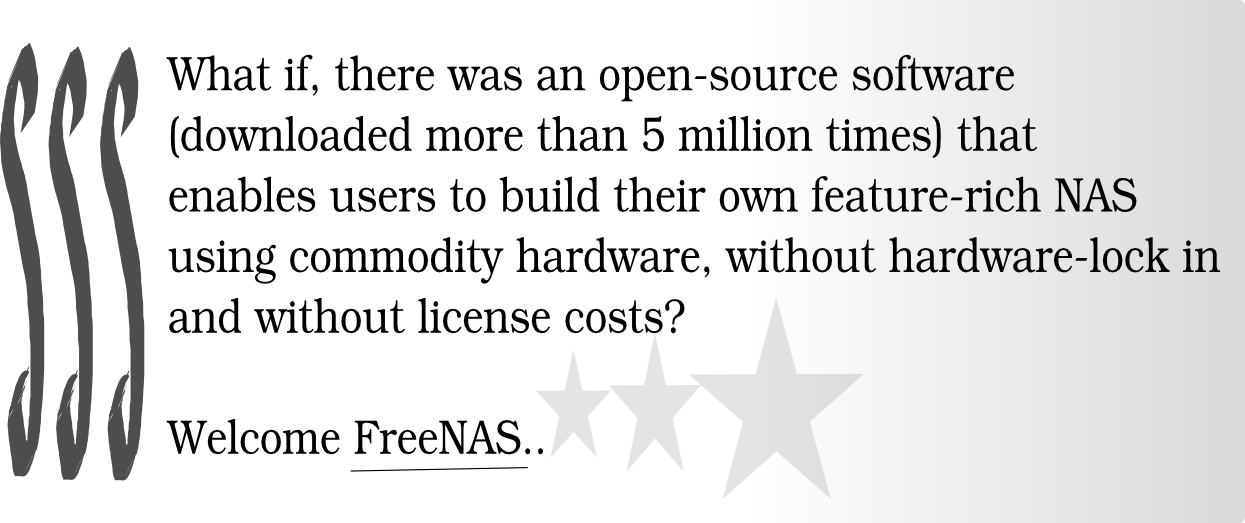FreeNAS: Open Source Network Storage (At a Glance)

What’s the simplest way to create network-based centralized storage? Buy a NAS appliance and hook it to your network. But what if, there was an open-source software (downloaded more than 5 million times) that enables you to build your own feature-rich NAS using commodity hardware, without hardware lock-in and without license costs?
Welcome FreeNAS.
FreeNAS, a cross-platform NAS application for home users, small businesses and enterprises, can be installed on/supports data in multiple operating systems and virtual machines. A full-fledged GUI (Graphical User Interface) provides easy set-up and administration. However, for developing your own plugins and other advanced tasks, knowledge of FreeBSD maybe required.
What are the defining features of FreeNAS? Why should you migrate to FreeNAS?
- Replication syncs and creates a duplicate of your backup to another system, over LAN or WAN.
- Incremental backup and Deduplication for optimal network/storage space utilization.
- Snapshots reverts the system to any point before the current state.
- Up to 3 disks can fail simultaneously without loss of data.
- Full-disk encryption prevents intruders from making sense of stored data, and safe disposal.
- Plugins extend NAS functionality to provide services like P2P bit-torrent, media streaming, etc.
- Graphs & email notification for monitoring the performance of the NAS.
- FreeNAS supports iSCSI, NFS in addition to SMB, CIFS, AFP, FTP.
- Integrates with enterprise directories – Active Directory & LDAP.
- Can be installed and booted from a USB stick/thumb-drive.
- Supports migration of data from existing servers using rsync.
- Plugins & updates can be installed & managed using GUI.
- Runs on x86, x86-64 (preferred) hardware architectures.
- Expandable, no storage limitations.
- Localized into 20 languages.
If you are still not convinced, iXsystems – the company that develops & maintains FreeNAS – also offers TrueNAS purpose-built appliances with 24×7 commercial support. These units include additional features like active/passive failover, hot-spare/hot-swap for disks, mirrored boot devices, dual-mode head units, flash-based read/write cache, etc.
excITingIP.com
You could stay up to date on Computer Networking/IT Technologies by subscribing to this blog with your email address in the sidebar box that says, ‘Get email updates when new articles are published’.